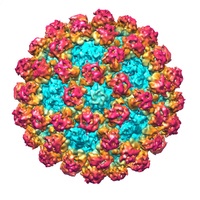Indrani Mukhopadhya

Recent studies suggest that gut viruses outnumber bacteria ten to one. Although viruses such as norovirus cause CD-like disease in genetically susceptible mice and disease flares in CD patients, their exact role in disease onset has not been properly investigated. This study aims to characterise the entire population of microorganisms from faecal samples of CD patients and compare it with that of healthy individuals. This comprehensive assessment will use state-of-the-art sequencing technologies and will allow us to understand how viruses compete and interact with bacteria and fungi in CD patients.
The outcome of this research will contribute to a deeper understanding of the role of viruses in inflammatory diseases and help design preventive strategies against the development of CD.
Image source: Debbink K et al. (2012) PLoS Pathog 8(10): e1002921. doi:10.1371/journal.ppat.1002921
